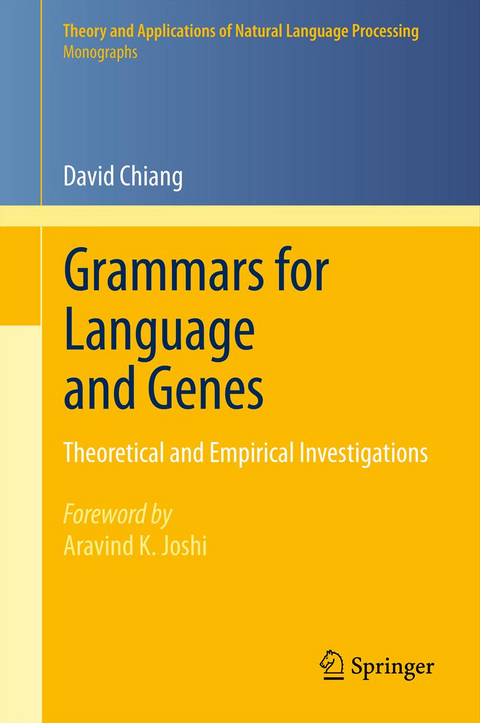
Grammars for Language and Genes
Theoretical and Empirical Investigations
Seiten
2013
|
2012
Springer Berlin (Verlag)
978-3-642-27080-2 (ISBN)
Springer Berlin (Verlag)
978-3-642-27080-2 (ISBN)
This book explores a framework for carrying out rigorous comparisons of grammar formalisms in terms of their usefulness for applications. It focuses on three areas: statistical parsing, natural language translation and biological sequence analysis.
Grammars are gaining importance in natural language processing and computational biology as a means of encoding theories and structuring algorithms. But one serious obstacle to applications of grammars is that formal language theory traditionally classifies grammars according to their weak generative capacity (what sets of strings they generate) and tends to ignore strong generative capacity (what sets of structural descriptions they generate) even though the latter is more relevant to applications.
This book develops and demonstrates a framework for carrying out rigorous comparisons of grammar formalisms in terms of their usefulness for applications, focusing on three areas of application: statistical parsing, natural language translation, and biological sequence analysis. These results should pave the way for theoretical research to pursue results that are more directed towards applications, and for practical research to explore the use of advanced grammar formalisms more easily.
Grammars are gaining importance in natural language processing and computational biology as a means of encoding theories and structuring algorithms. But one serious obstacle to applications of grammars is that formal language theory traditionally classifies grammars according to their weak generative capacity (what sets of strings they generate) and tends to ignore strong generative capacity (what sets of structural descriptions they generate) even though the latter is more relevant to applications.
This book develops and demonstrates a framework for carrying out rigorous comparisons of grammar formalisms in terms of their usefulness for applications, focusing on three areas of application: statistical parsing, natural language translation, and biological sequence analysis. These results should pave the way for theoretical research to pursue results that are more directed towards applications, and for practical research to explore the use of advanced grammar formalisms more easily.
1.Introduction.- 2.Foundation.- 3.Statistical Parsing.- 4.Machine Translation.- 5.Biological Sequence Analysis: Basics.- 6.Biological Sequence Analysis: Intersection.- 7.Conclusion.- References.- Index.
| Erscheint lt. Verlag | 26.11.2013 |
|---|---|
| Reihe/Serie | Theory and Applications of Natural Language Processing |
| Vorwort | Aravind K. Joshi |
| Zusatzinfo | XII, 120 p. |
| Verlagsort | Berlin |
| Sprache | englisch |
| Maße | 155 x 235 mm |
| Gewicht | 213 g |
| Themenwelt | Informatik ► Theorie / Studium ► Künstliche Intelligenz / Robotik |
| Informatik ► Weitere Themen ► Bioinformatik | |
| Mathematik / Informatik ► Mathematik ► Logik / Mengenlehre | |
| Schlagworte | 03-XX, 03Dxx, 03D05, 68Txx • Biological sequence analysis • formal grammars • language translation • statistical parsing • strong generative capacity |
| ISBN-10 | 3-642-27080-8 / 3642270808 |
| ISBN-13 | 978-3-642-27080-2 / 9783642270802 |
| Zustand | Neuware |
| Haben Sie eine Frage zum Produkt? |
Mehr entdecken
aus dem Bereich
aus dem Bereich
Buch | Softcover (2024)
REDLINE (Verlag)
CHF 27,95
Eine kurze Geschichte der Informationsnetzwerke von der Steinzeit bis …
Buch | Hardcover (2024)
Penguin (Verlag)
CHF 39,20


